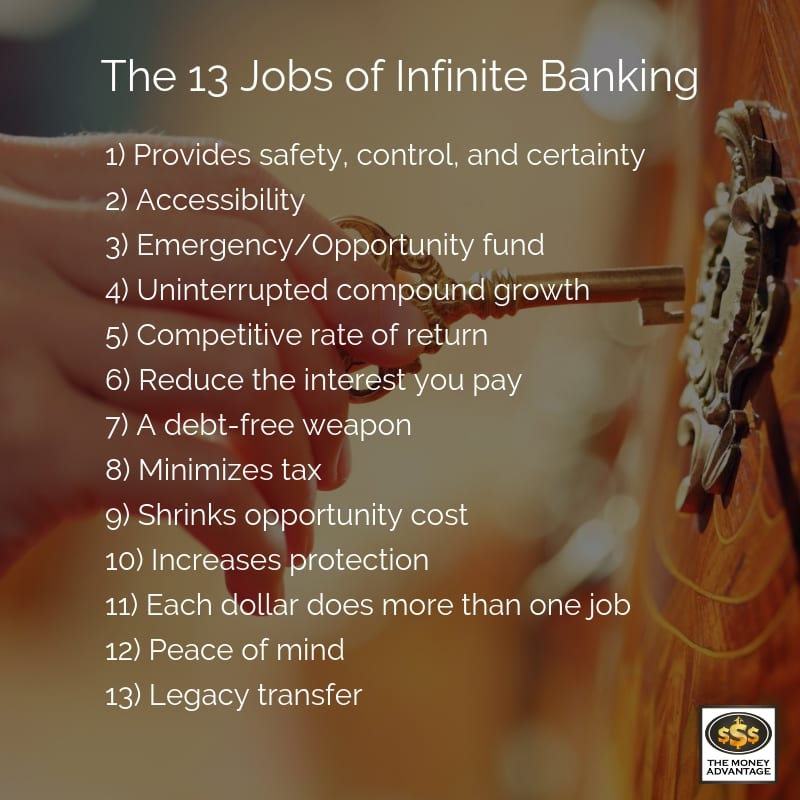All Categories
Featured
Table of Contents
Okay, to be reasonable you're truly "banking with an insurer" instead of "financial on yourself", but that principle is not as simple to offer. Why the term "boundless" financial? The idea is to have your cash functioning in several areas at the same time, instead than in a single area. It's a bit like the idea of purchasing a home with cash, then obtaining versus the home and putting the money to operate in an additional financial investment.
Some individuals like to talk about the "rate of cash", which basically implies the very same thing. That does not indicate there is absolutely nothing beneficial to this principle once you obtain past the marketing.
The entire life insurance market is tormented by excessively costly insurance coverage, enormous commissions, questionable sales practices, low prices of return, and badly educated customers and salesmen. However if you desire to "Rely on Yourself", you're mosting likely to need to wade right into this sector and in fact purchase whole life insurance policy. There is no substitute.
The warranties fundamental in this item are crucial to its function. You can obtain versus the majority of types of money value life insurance policy, but you should not "bank" with them. As you acquire a whole life insurance plan to "financial institution" with, bear in mind that this is a completely different section of your economic strategy from the life insurance coverage area.
Buy a huge fat term life insurance coverage policy to do that. As you will certainly see below, your "Infinite Banking" plan actually is not going to accurately give this essential economic feature. Another issue with the fact that IB/BOY/LEAP counts, at its core, on a whole life plan is that it can make getting a policy problematic for a number of those thinking about doing so.
Banking Concept
Dangerous leisure activities such as SCUBA diving, rock climbing, sky diving, or flying additionally do not mix well with life insurance items. That may function out fine, because the factor of the plan is not the death advantage, but bear in mind that getting a policy on minor children is a lot more pricey than it ought to be since they are typically underwritten at a "common" price rather than a chosen one.

Many plans are structured to do a couple of things. The majority of frequently, plans are structured to take full advantage of the payment to the representative selling it. Negative? Yes. It's the reality. The payment on a whole life insurance policy policy is 50-110% of the very first year's costs. In some cases policies are structured to make the most of the fatality advantage for the premiums paid.
With an IB/BOY/LEAP policy, your objective is not to take full advantage of the fatality benefit per buck in costs paid. Your objective is to maximize the money value per dollar in costs paid. The rate of return on the plan is very important. One of the very best methods to take full advantage of that element is to get as much cash money as possible right into the policy.
The finest way to boost the price of return of a plan is to have a relatively small "base plan", and after that placed more cash right into it with "paid-up enhancements". With more cash in the plan, there is more cash money worth left after the costs of the death advantage are paid.
An additional benefit of a paid-up enhancement over a regular costs is that the compensation price is lower (like 3-4% as opposed to 50-110%) on paid-up enhancements than the base plan. The much less you pay in compensation, the higher your price of return. The price of return on your money worth is still mosting likely to be adverse for a while, like all money value insurance coverage.
However it is not interest-free. It might cost as much as 8%. Most insurer only offer "straight recognition" fundings. With a straight recognition financing, if you borrow out $50K, the returns rate applied to the cash value annually just uses to the $150K left in the plan.
Infinite Banking Simplified
With a non-direct recognition financing, the firm still pays the same returns, whether you have actually "borrowed the cash out" (technically versus) the plan or otherwise. Crazy? Why would certainly they do that? Who knows? However they do. Commonly this feature is combined with some less beneficial facet of the plan, such as a lower returns rate than you might get from a plan with straight recognition car loans (how do you become your own bank).
The firms do not have a resource of magic totally free cash, so what they provide in one place in the plan need to be taken from another place. But if it is drawn from a function you care less about and put into an attribute you care much more around, that is a good idea for you.
There is one more crucial function, usually called "laundry loans". While it is terrific to still have actually dividends paid on money you have obtained of the plan, you still have to pay rate of interest on that funding. If the returns rate is 4% and the funding is billing 8%, you're not precisely coming out ahead.
With a clean car loan, your financing rates of interest is the same as the dividend rate on the policy. While you are paying 5% rate of interest on the loan, that rate of interest is entirely balanced out by the 5% returns on the lending. So in that regard, it acts similar to you took out the money from a checking account.

5%-5% = 0%-0%. Without all three of these elements, this plan just is not going to function extremely well for IB/BOY/LEAP. Almost all of them stand to make money from you buying into this idea.
There are numerous insurance representatives chatting regarding IB/BOY/LEAP as an attribute of whole life that are not really selling policies with the required functions to do it! The issue is that those who understand the principle best have a substantial problem of rate of interest and normally blow up the advantages of the concept (and the underlying plan).
Can You Create Your Own Bank
You should contrast loaning against your policy to withdrawing money from your cost savings account. No money in cash money value life insurance coverage. You can place the money in the bank, you can spend it, or you can acquire an IB/BOY/LEAP policy.
You pay taxes on the passion each year. You can conserve some even more cash and put it back in the financial account to begin to make passion again.
When it comes time to buy the boat, you market the financial investment and pay taxes on your lengthy term capital gains. You can save some even more money and buy some more financial investments.
The cash money worth not made use of to spend for insurance and compensations grows throughout the years at the dividend price without tax drag. It begins with negative returns, however with any luck by year 5 or so has actually recovered cost and is growing at the returns rate. When you go to acquire the watercraft, you borrow against the policy tax-free.
Paradigm Life Infinite Banking
As you pay it back, the money you paid back starts growing once again at the dividend price. Those all job rather similarly and you can compare the after-tax prices of return.
They run your credit report and give you a finance. You pay rate of interest on the borrowed cash to the bank up until the car loan is settled. When it is settled, you have a virtually pointless boat and no money. As you can see, that is nothing like the initial 3 choices.
Latest Posts
Infinite Banking Concepts
'Be Your Own Bank' Mantra More Relevant Than Ever
How Infinite Banking Works